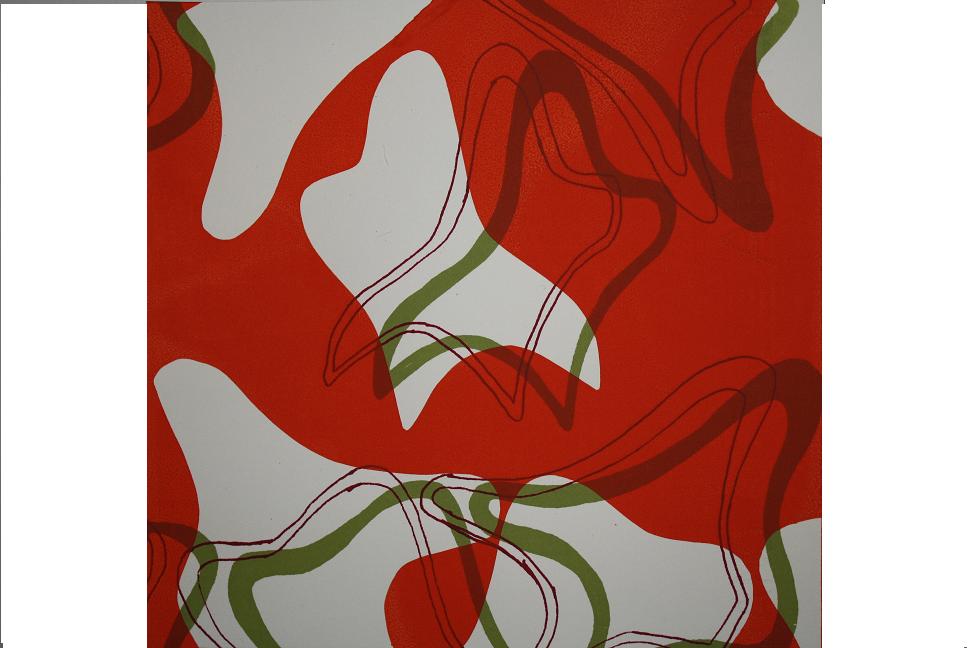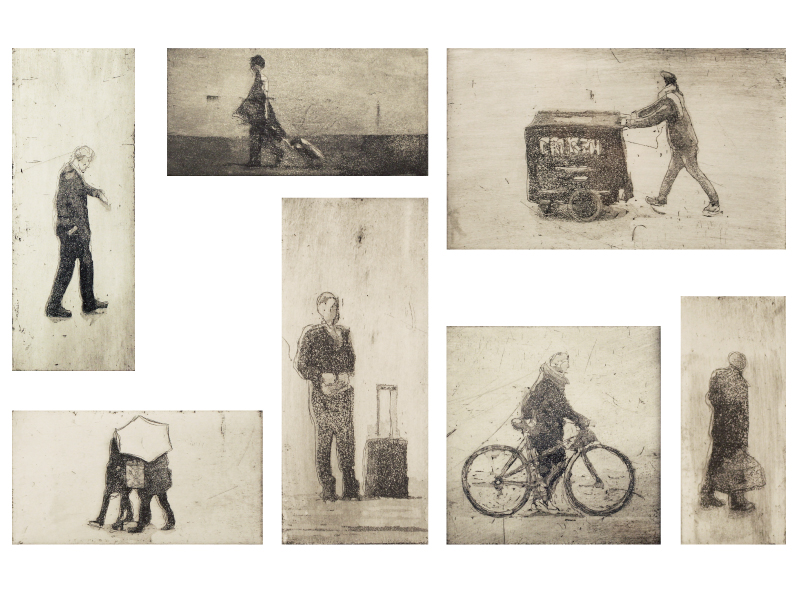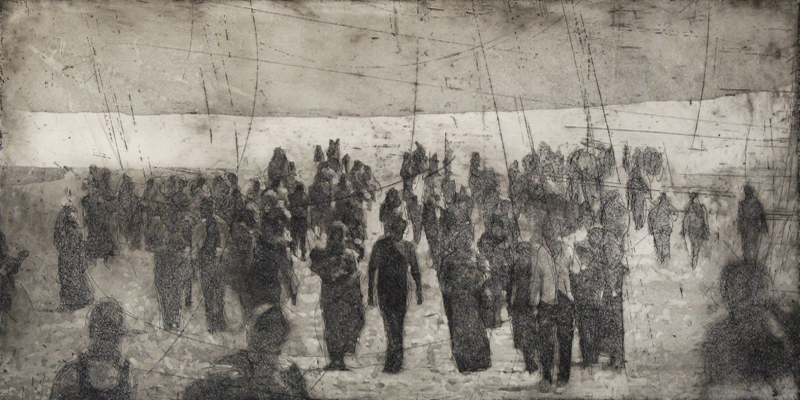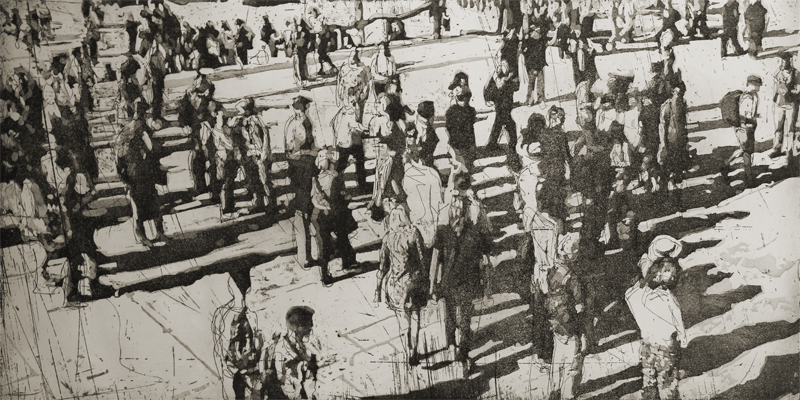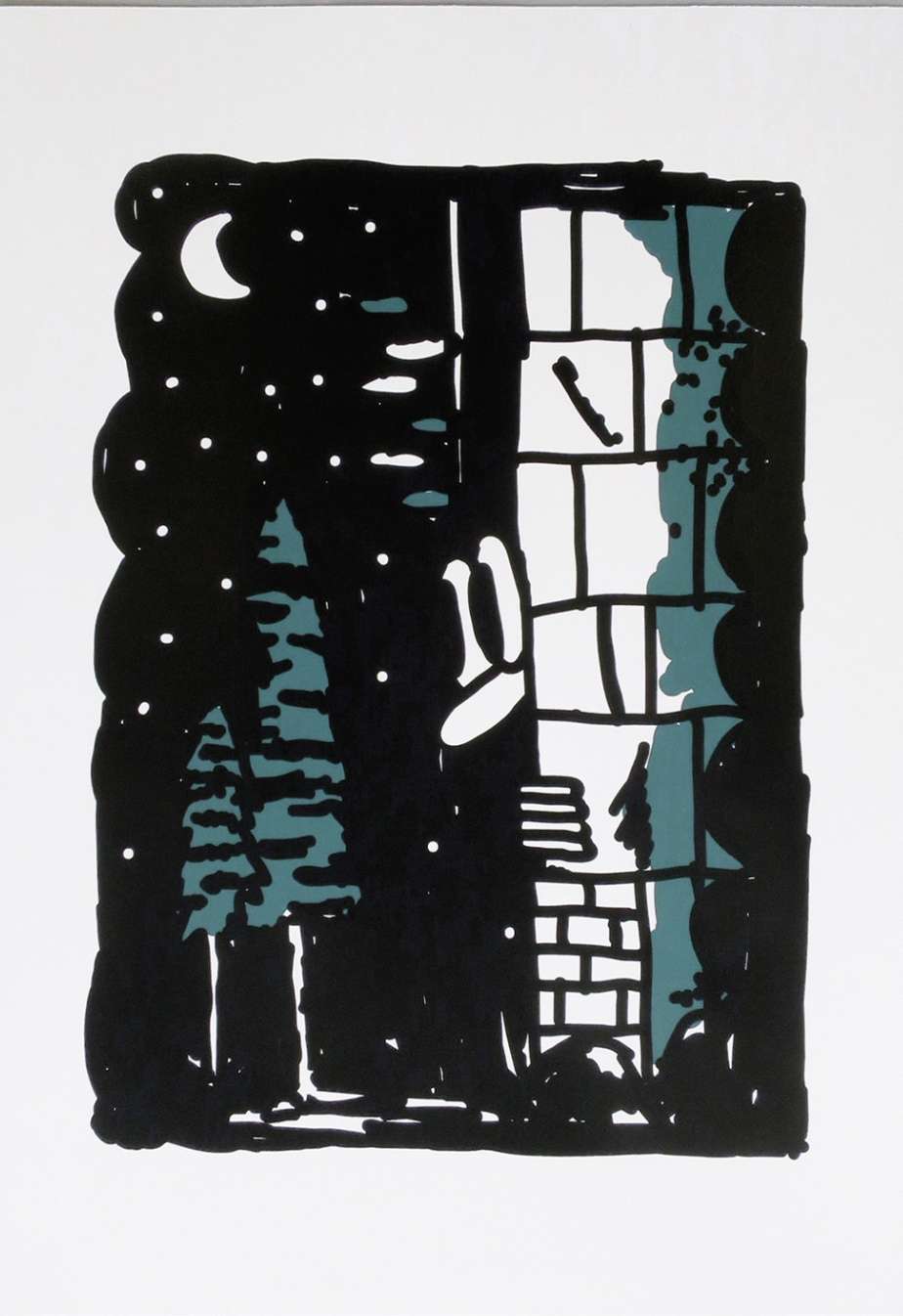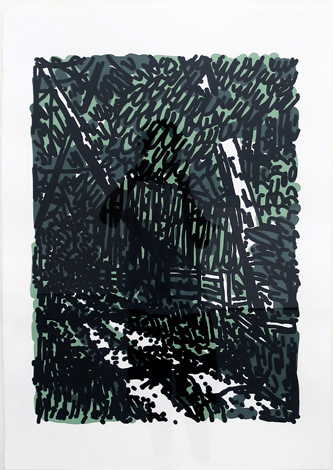Each year the Printmakers Council makes awards to Graduates at various universities. Featured here are 4 of the award winners from 2015
Being from a medical background I suppose that I chose to study Fine Art at the University for Creative Arts in Farnham so that I could play!
Although I studied Art in tandem with Biology, I knew where my career lay so it wasn’t until later that I concentrated on my artistic side. I think this background has subconsciously influenced my work as I am interested in experimentation, sequential images and documentation. The body or a suggestion of it, is often present too.
Whilst in Barcelona completing an MA from Winchester in European Fine Art, I became interested in Installation, often using my prints. I do like to use a range of media and sometimes, unorthodox techniques.
I now screenprint and linocut at Ochre Print Studio near Guildford where I am a member of the Events team and organise Artists Talks.
I would say that chance is an important element in my work, as is abstraction of the image. However my primary concern is the relationship of the curved line within the square.
I continue to experiment and have fun which for me is what art is all about.
I was inspired by some masterpieces of Pieter Bruegel and Hendrick Avercamp at the museums in Belgium and in the Netherlands. Pieter Bruegel and Hendrick Avercamp were artists, roughly 450 years ago. What I saw at the museum was about people. In the pictures, many people are on the ground.
At present, there are a lot of people from every country in London. If you walk the streets of London, jostling with the crowds is a daily occurrence and sometimes, you have to wait for a while in order to enter the underground. One of the things that cannot be performed in London is to walk alongside three people. People’s lives in this era seem to be similar to people’s lives in the past even after 450 years.
Every second is precious to me in London like every breath is important for us to be alive. It makes me feel alive and more enhanced. However, I cannot remember everything I experienced and everyone I met. We are losing our memory day by day.
“My purpose is to render my emotion. This state of soul is created by the objects which surround me and which react in me; from the horizon to myself, myself included.” Matisse
Studying printmaking has taught me about the importance of acquiring practical skills, but it has also given me a deeper understanding of the image itself, and an awareness that an image can have a life of its own. Sometimes this life is one that the artist cannot control.
In my work I try to explore and develop the dialogue that exists in space – especially domestic space – between the objects and furnishings that occupy it. I use drawing to negotiate the physical spaces of the home – from the domestic and familiar to uncanny, un-occupied – and the various objects contained within them.
Exploring the notion of the room as an oasis, I try to create ambiguous and dysfunctional journeys for the viewer, going nowhere and everywhere, engaging the visual imagination. This dysfunctional element can be positive – as the familiar image of the home morphs and changes in the mind’s eye. But while in this sense my images can represent a place of refuge, it can just as equally indicate a place of hostility. The medium of printmaking brings out this duality in that it allows me to develop images that are at once three dimensional, but at the same time, consist of entirely flat planes which work to flatten the space, and obstruct a clear entrance through the picture plane to the room beyond.
The home for me is a place of safety, an environment I manipulate to perhaps represent you, how you feel or how you want to feel, your outlook on the world around you or the world’s impact on you. One tends to fill their home with things we enjoy and find beautiful – but these things can be anything and this sense of individuality is what I find interesting.
I grew up with my father as an antique dealer and my mother an interior decorator. This attention to the home had a subtle but concrete impact on the direction my work started to take during my time at art school; the menial bare essentials of the home, to the embellished, decorative furnishings we identify ourselves by.
The many places I have travelled, such as India and Morocco, inspire and inform the patterns and colours I employ in my images. Using decorative collaged fragments I enjoy elaborating simple line drawings, transforming them into richly coloured and illustrious interiors and objects.
The basis of my work at this moment in time is landscape, I build almost everything I make from an initial idea or image that is intrinsically linked to a landscape, be it an ornamental garden, a bleak moorland or a rocky cove. The forms and structures my prints and paintings are overemphasised by a racket of black marks – I see these as echoes of a clear idea that has become swamped by itself and started to swell and multiply.
During an MA at Camberwell I studied Thomas Cole’s ‘The Course of an Empire’, a five part series of allegorical paintings that depict the growth and decline of an imaginary ancient city, I became struck by his interpretation of the age old adage of man’s brevity and the doggedness of nature. The changing landscapes within the paintings and the miniature people among the vast forests and temples are subject to an unseen omnipotence. I began experimenting with the figuration of God, two floating eyes that watch over the destruction they cause, sometimes crying, sometimes angry. I hypothesized the next painting in the series, man emerging from the devastation and creeping into a barren new world.
With my prints I try to apply colour carefully. I admire Alex Katz and Tal R especially for their use of colour. Katz’ subtle accents are juxtaposed by a flatness and economy of colour, whereas Tal R’s exuberant and limited pallet is particularly impressive because of his measured and unapologetic use of contrasting colour.



